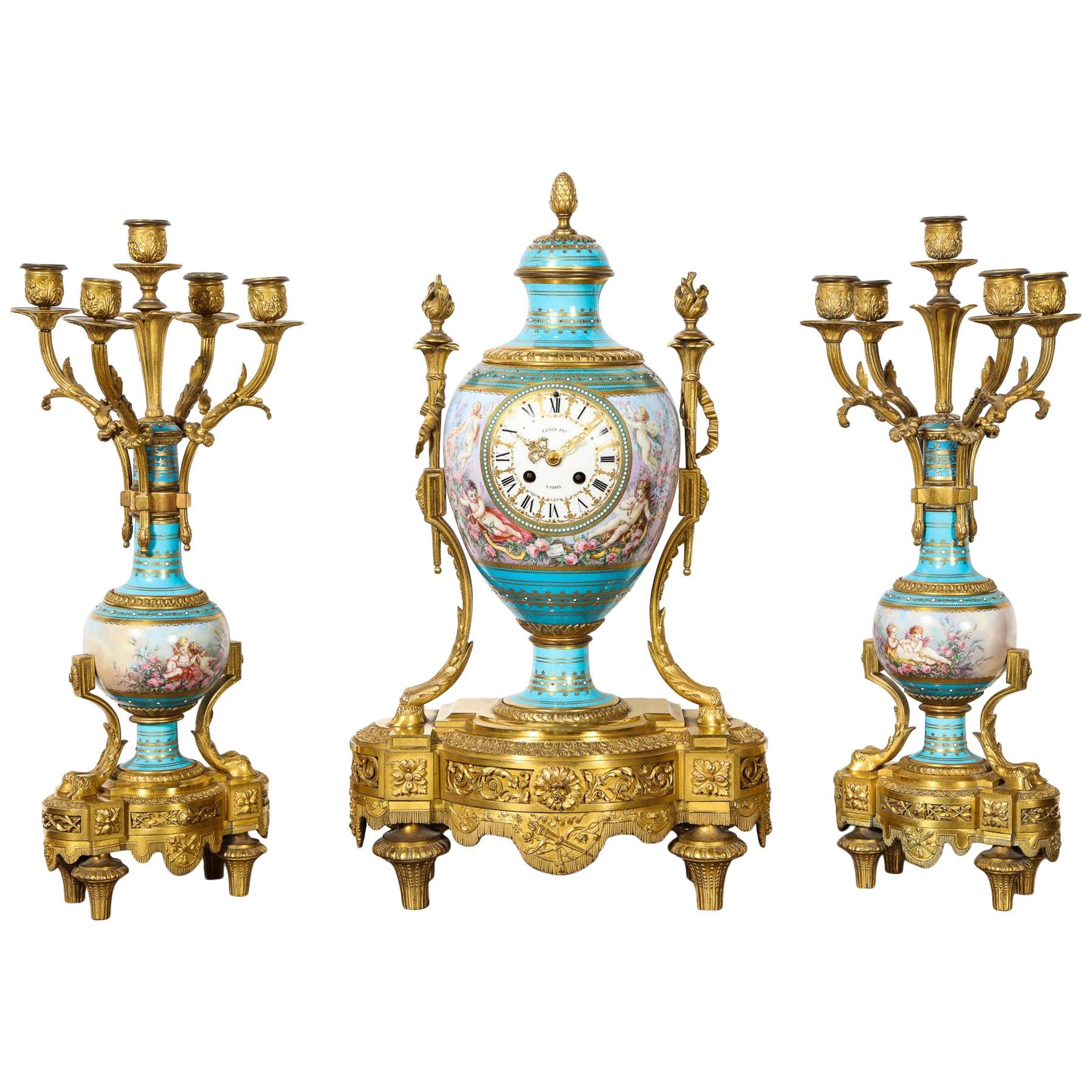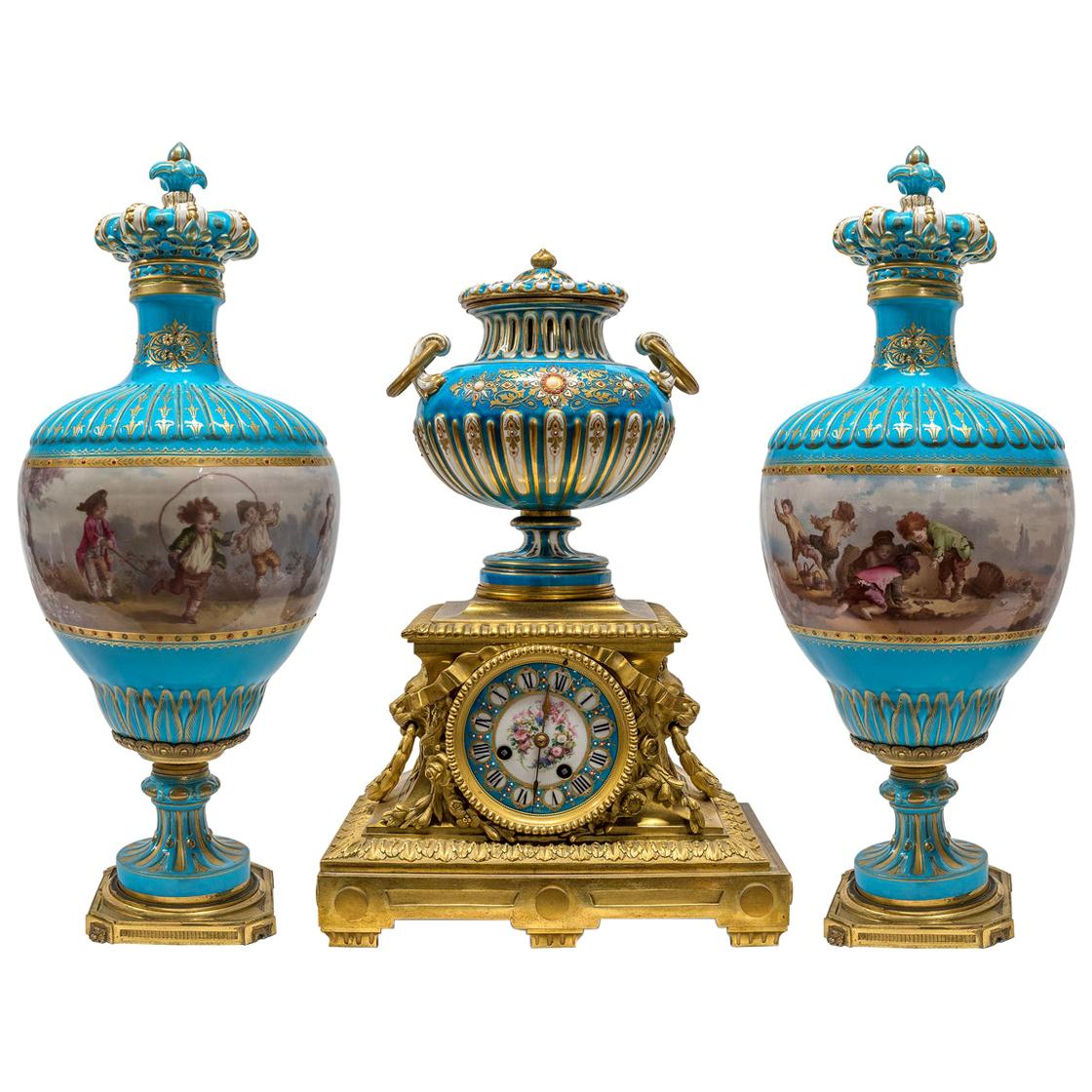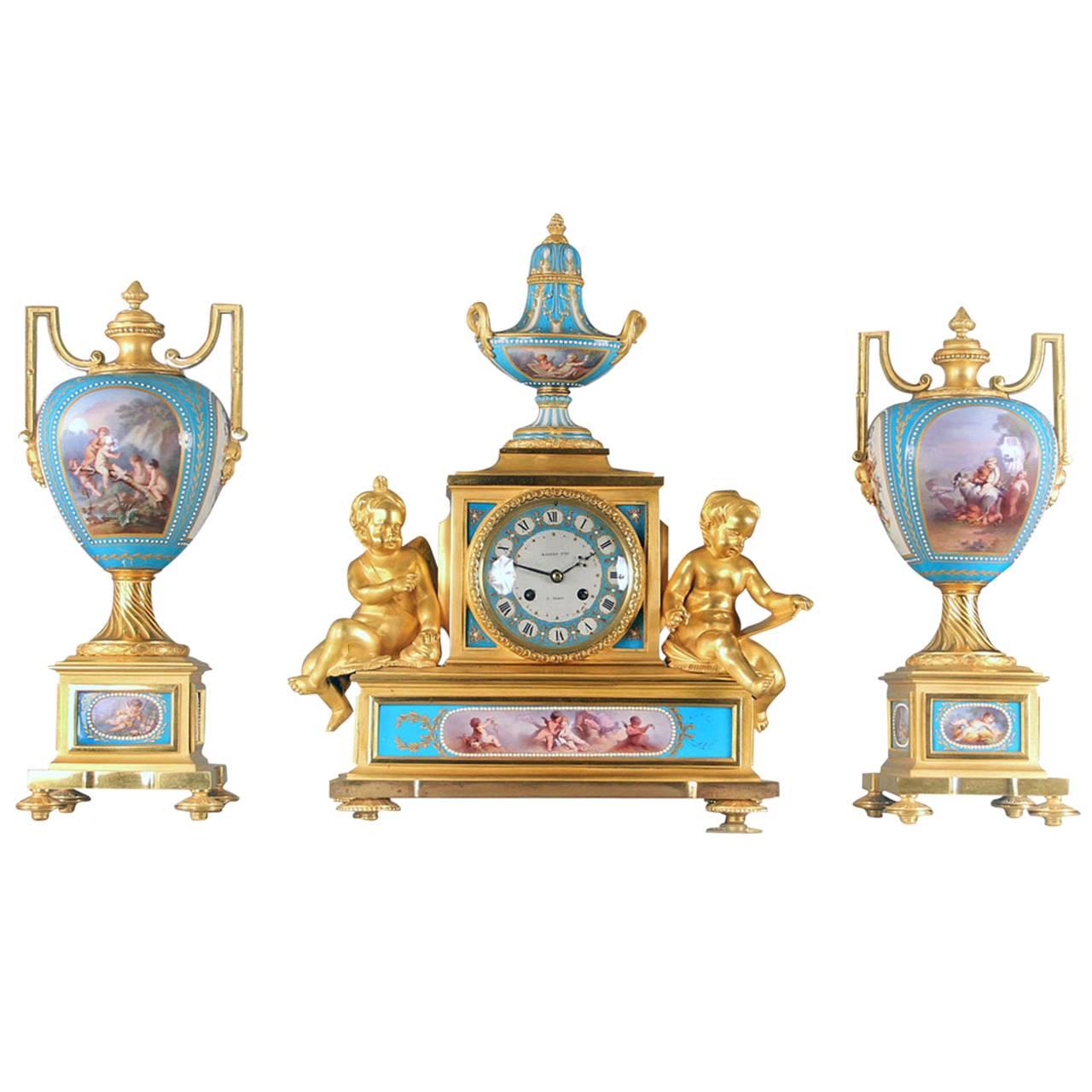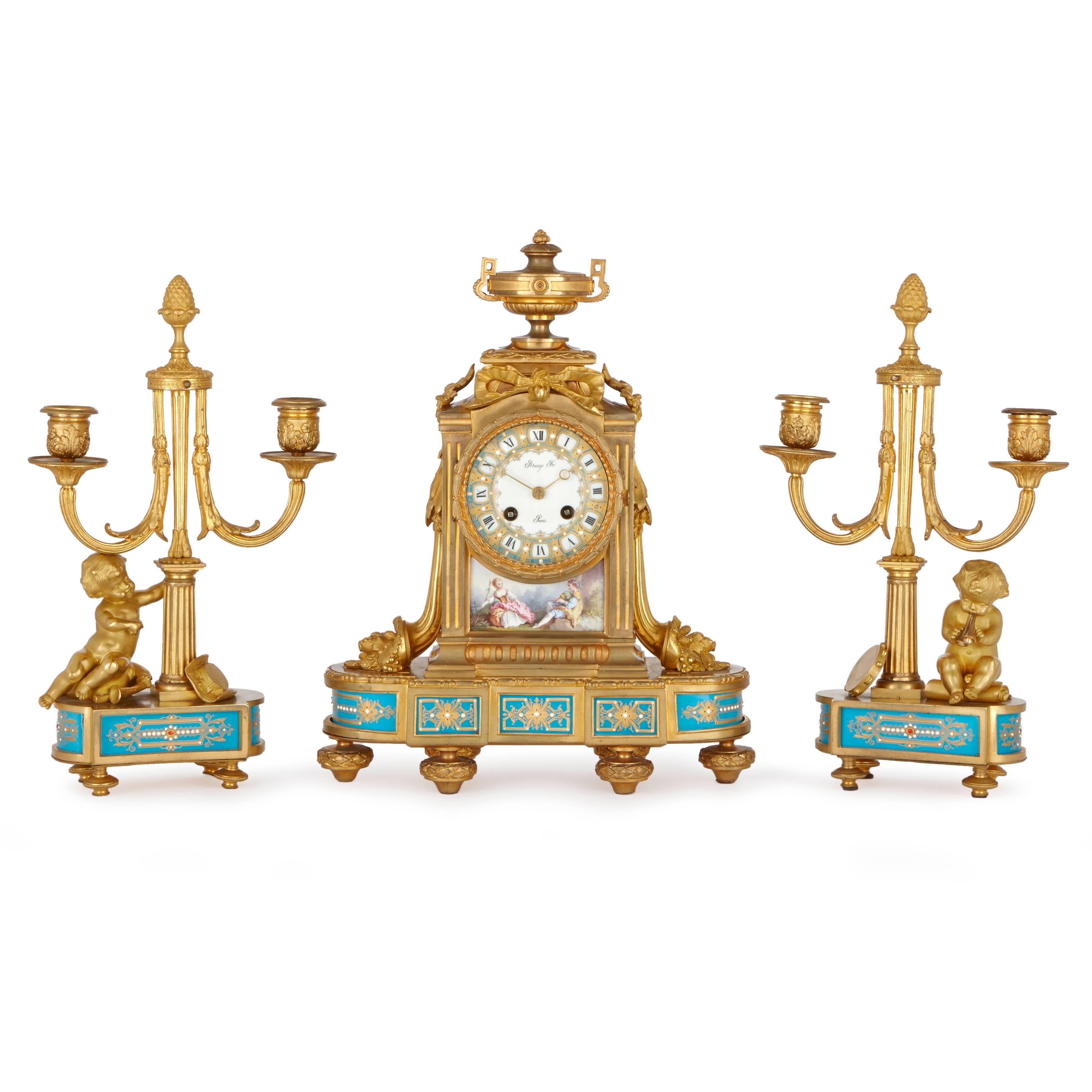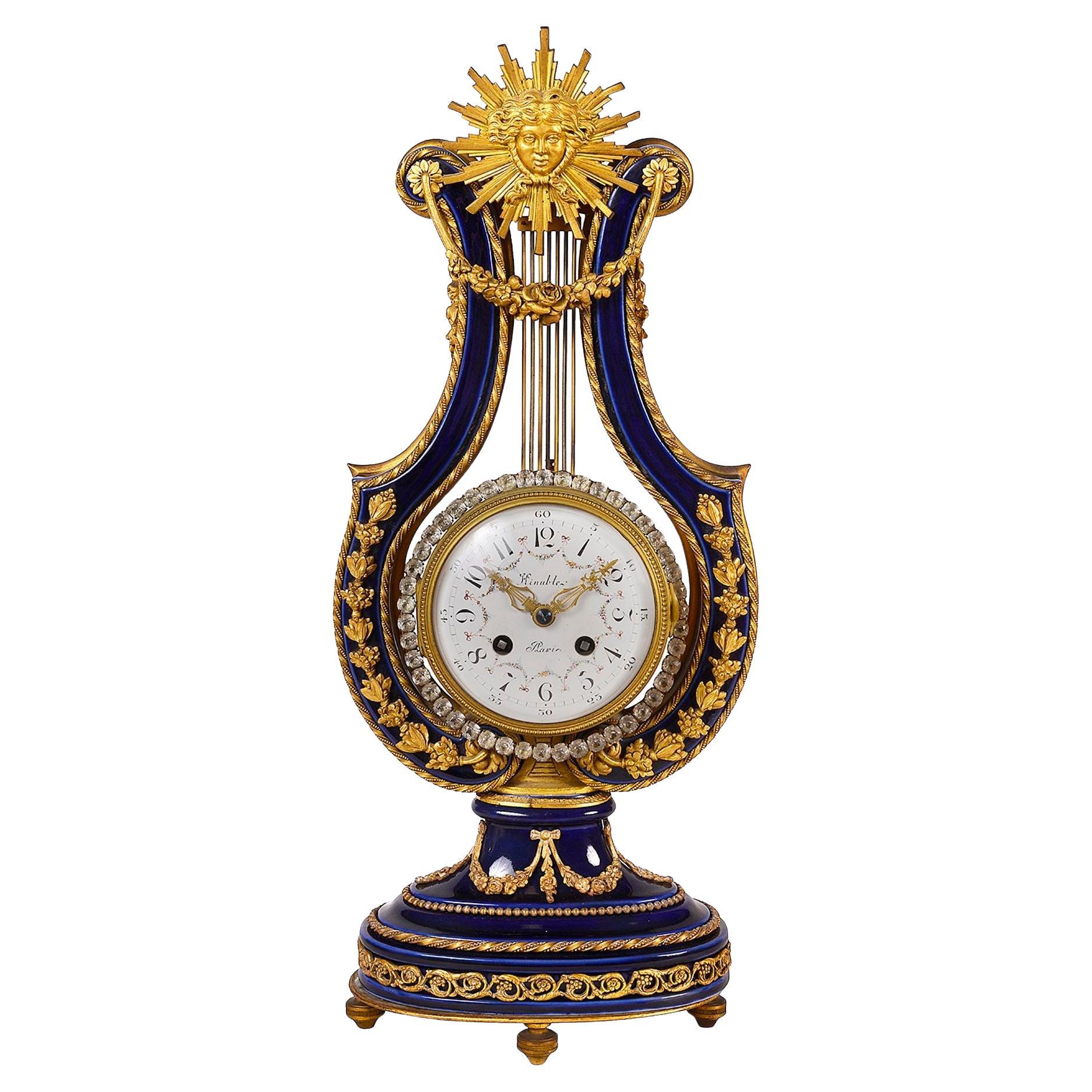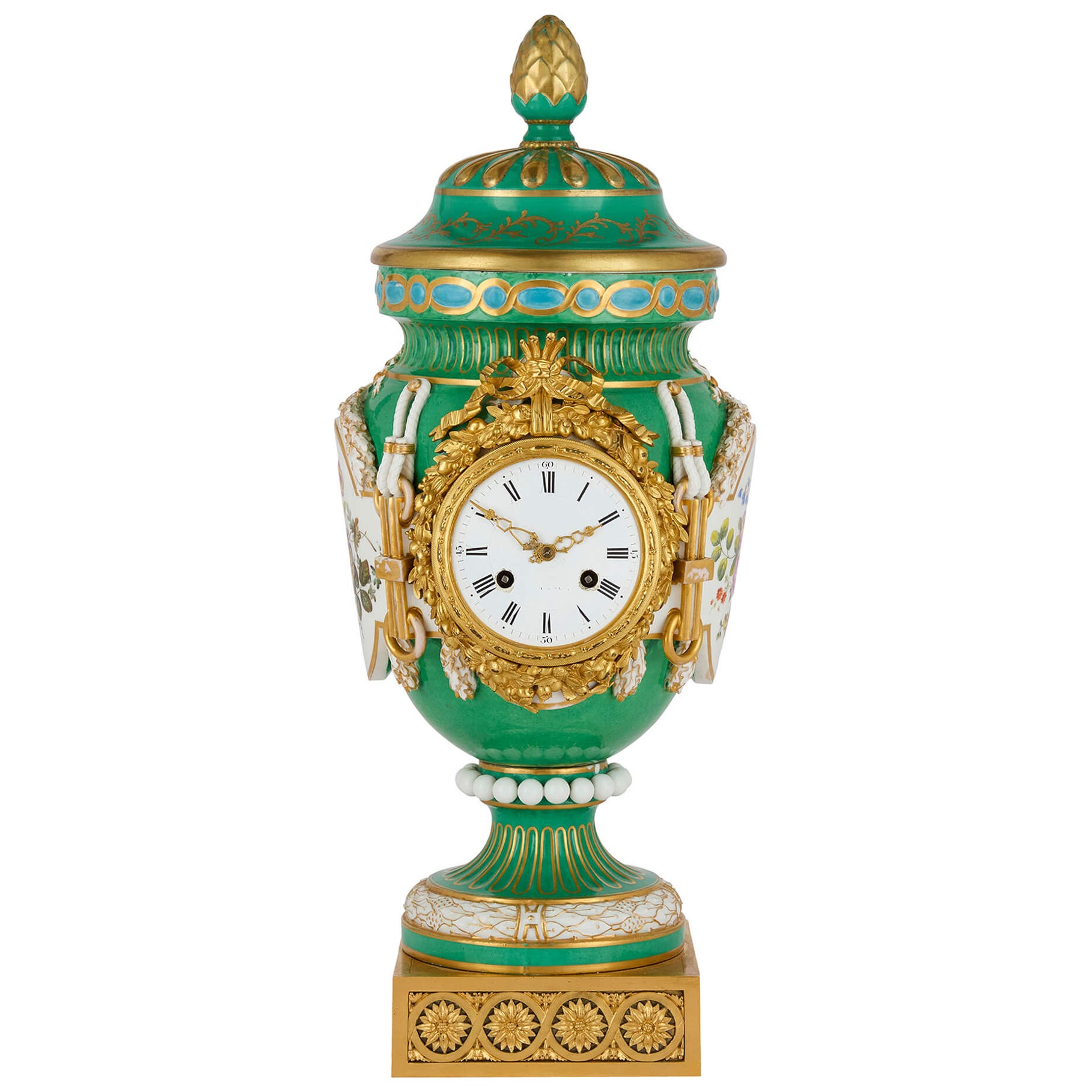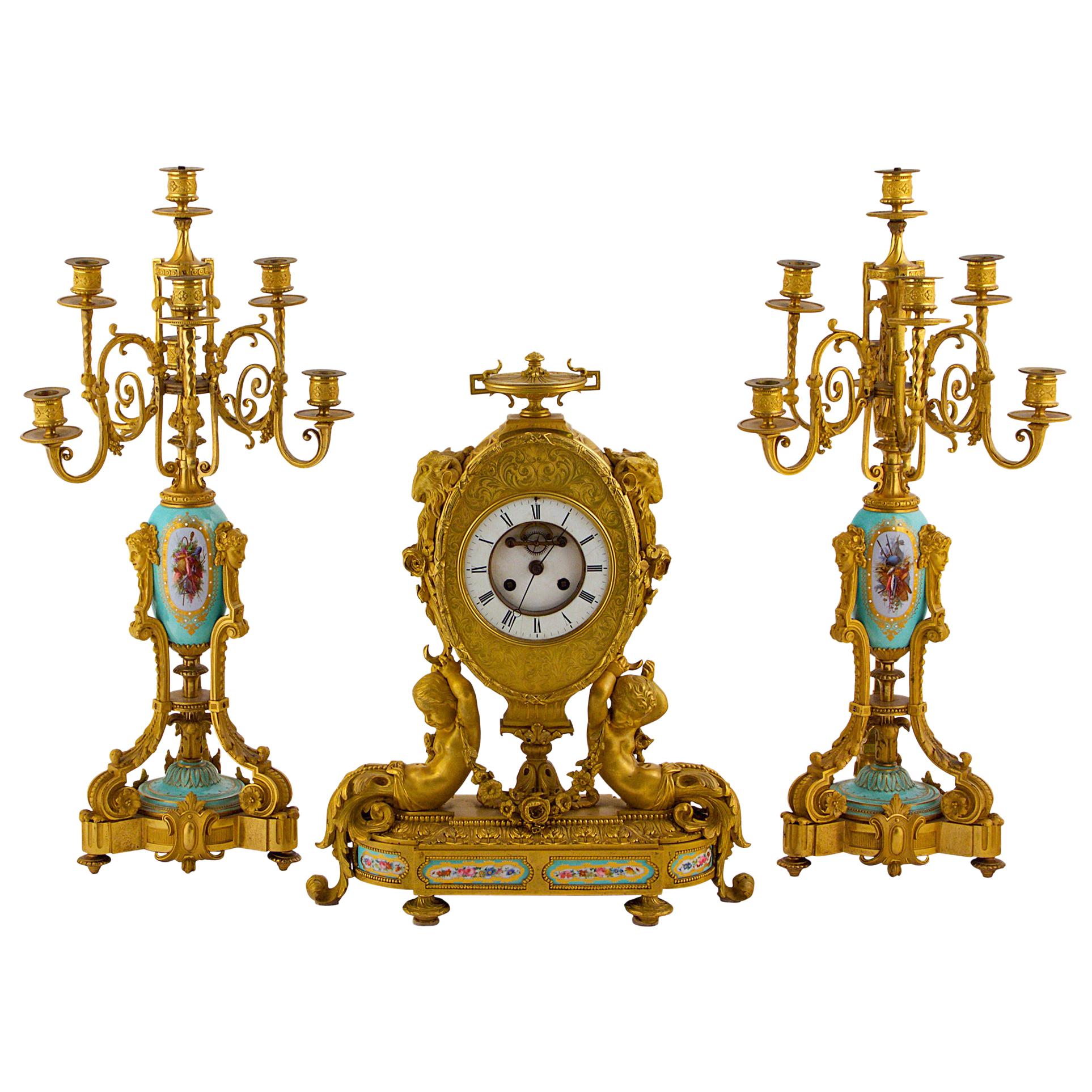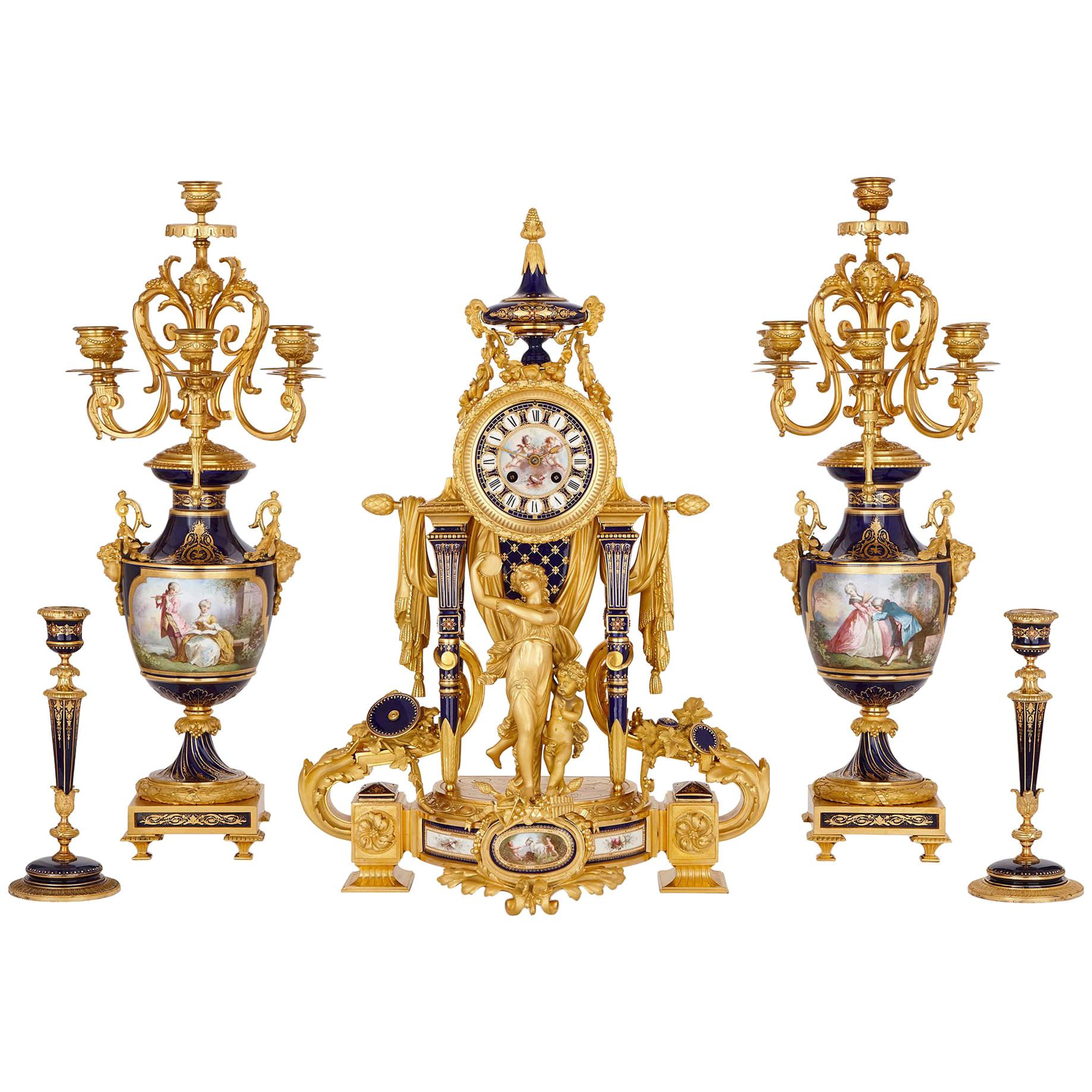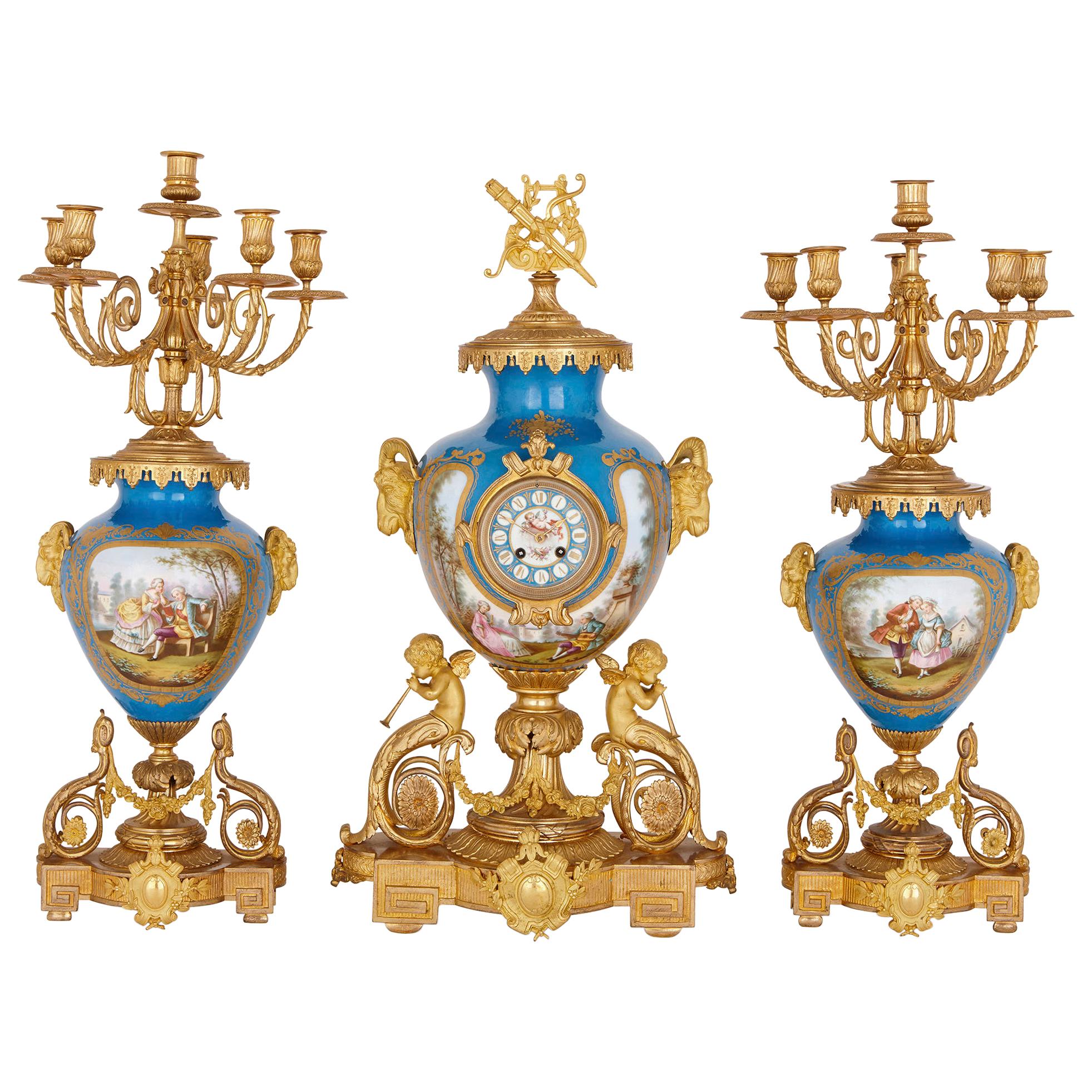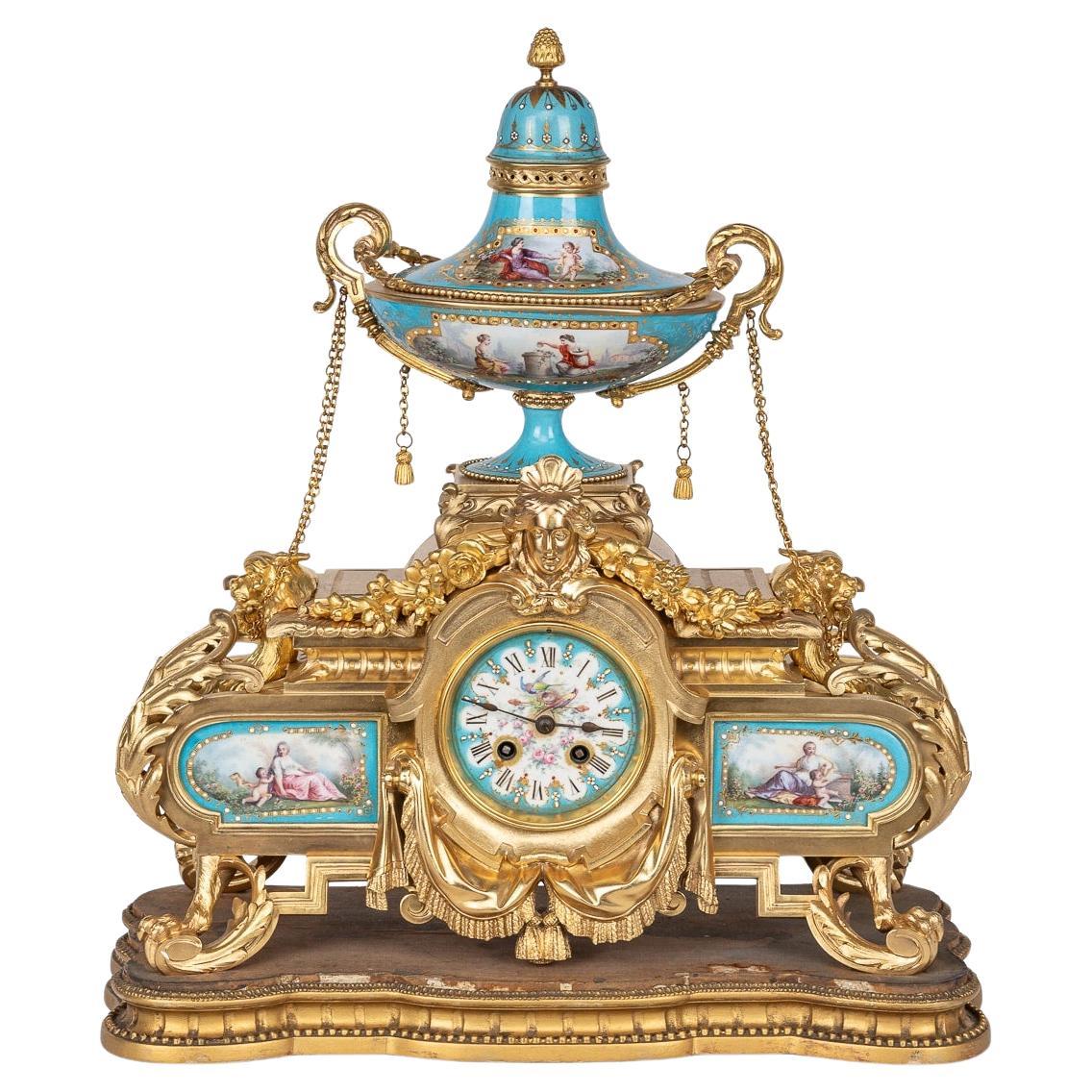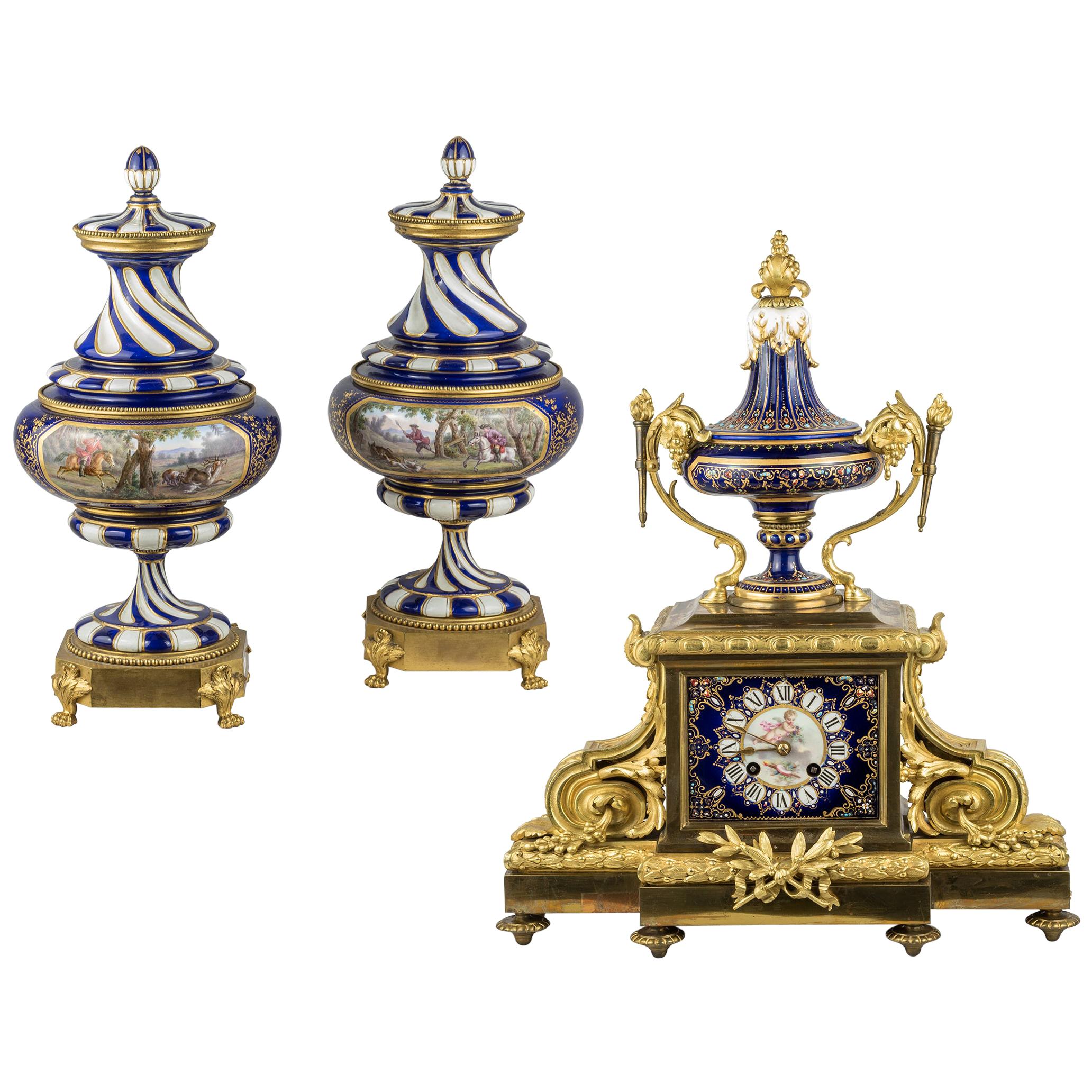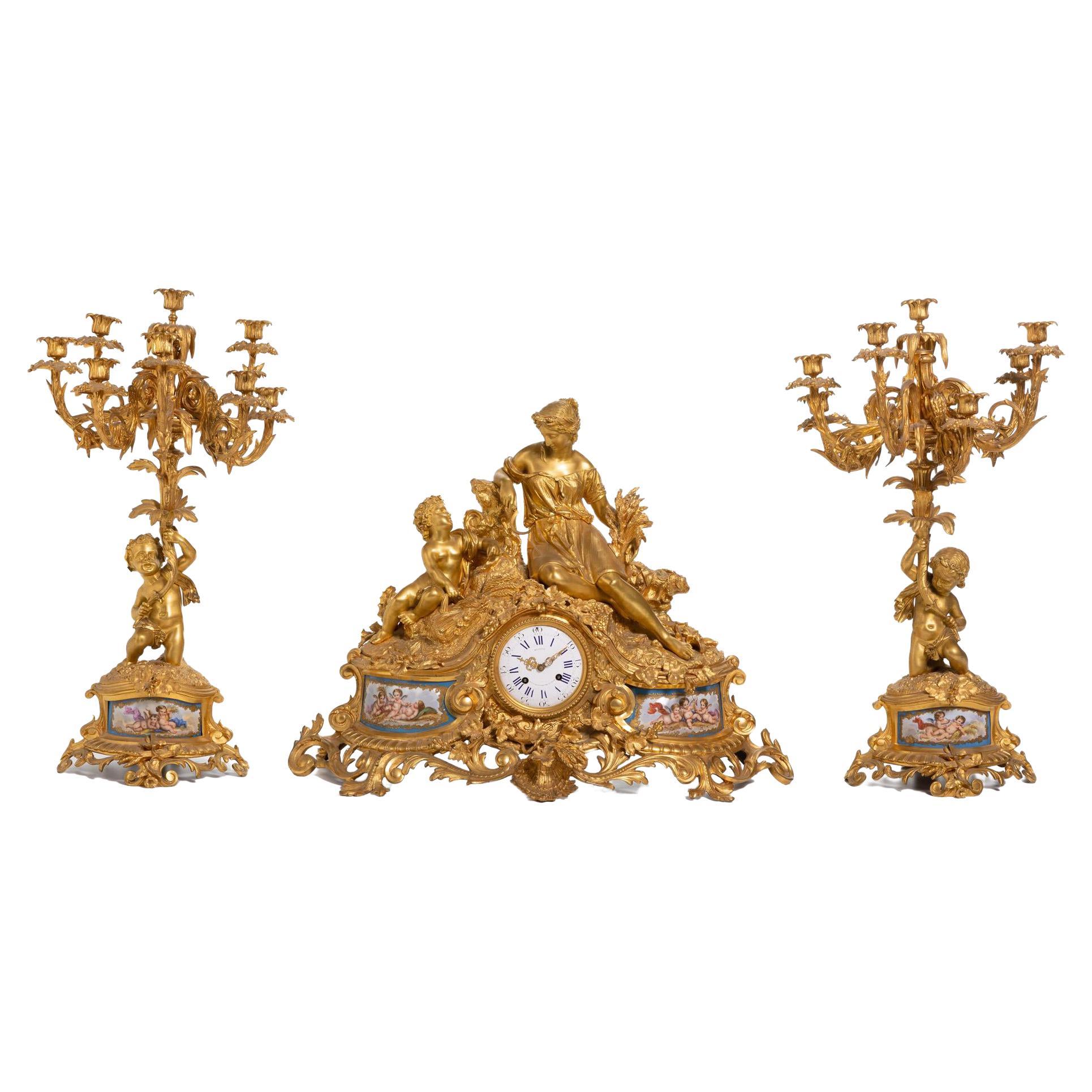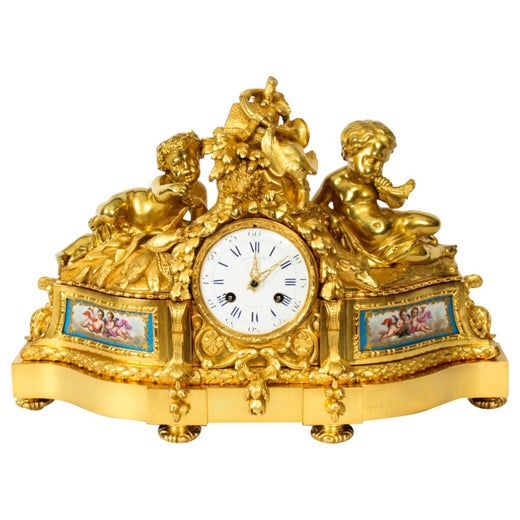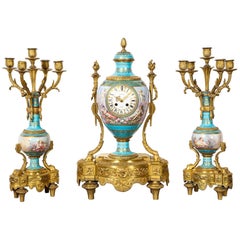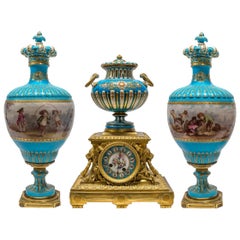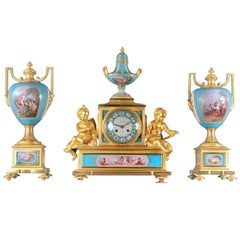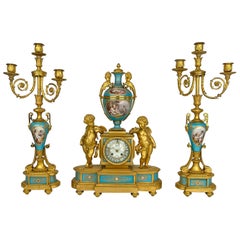
An Ormolu-Mounted Sevres Style Porcelain 'JEWELED' Turquoise-Ground Clock Set
View Similar Items
An Ormolu-Mounted Sevres Style Porcelain 'JEWELED' Turquoise-Ground Clock Set
About the Item
- Creator:Raingo Frères (Artist)
- Dimensions:Height: 23 in (58.42 cm)Width: 19 in (48.26 cm)Depth: 8 in (20.32 cm)
- Style:Louis XV (In the Style Of)
- Materials and Techniques:
- Period:
- Date of Manufacture:Circa 1860
- Condition:
- Seller Location:Pasadena, CA
- Reference Number:1stDibs: LU7847231689492
Raingo Frères
The clock-making company Raingo Frères built some of the most remarkable timepieces of the 19th century. Best known for its ornate mantel clocks, the company also masterfully crafted other works, such as candelabras and sculptures. Modeled on Renaissance, Byzantine and Empire styles, the company’s gilded garniture is some of the most recognizable artistic work of the 19th century. It displays the elaborate majesty prevalent in aristocratic and royal homes of the period.
Belgian watchmaker and metalworker Zacharie Raingo was the son of a watchmaker, and he took up the trade in his youth. He lived and worked in Belgium until 1813, when he relocated to Paris. During his time in Belgium, Raingo was inspired by Antide Janvier and developed his own planetary pendulum. In 1810, he patented an astronomical clock, a rotating spherical mechanism designed to emulate the behavior of celestial bodies.
In 1823, he founded Raingo Frères with his four sons, Adolphe, Charles, Denis and Dorsant. Established as both an industrial and commercial venture, the company quickly gained notoriety for its bronze work in addition to its fame as a clockmaker. It created works for an array of nobility and royalty, like the Duke of Chartres, King George V of England and Emperor Napoleon III of France, whose collection is now at the Louvre museum in Paris.
The company exhibited its works in the 1867, 1878 and 1889 World’s Fairs in Paris, winning numerous prizes, including a gold medal in 1889. Many museums and private collections boast works by Raingo Frères, including the Musée des Arts et Métiers in Paris and the Royal Museums of Art and History in Brussels.
On 1stDibs, find incredible wall clocks, mantel clocks, vases and more by Raingo Frères.
You May Also Like
Antique Late 19th Century French Napoleon III Mantel Clocks
Bronze, Ormolu
Antique Late 19th Century French Mantel Clocks
Ormolu, Bronze
Antique Mid-19th Century French Belle Époque Clocks
Bronze
Antique 19th Century French Mantel Clocks
Bronze
Antique 19th Century French Mantel Clocks
Bronze
Antique 19th Century French Louis XVI Mantel Clocks
Ormolu
